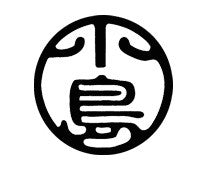
The term keshi pearls was first used in early 20th century Japan to describe natural seed pearls. These tiny gems resembled small seeds, and so were named keshi which means poppy seed in Japanese. Later, when the Japanese began to culture Akoya pearls, the name keshi was given to by-products that were created after rejection of a bead nucleus. In these instances, a bit of mantle tissue, shell fragment or microorganism became lodged in the oyster’s inner lining causing it to secrete nacre. The accidental invaders would then grow and harden into baroque-shaped, all-nacre seed pearls. Other varieties of pearls that emerge through this route are also called keshi. For many decades, most Akoya keshi pearls have been sent to India for processing. This flow of keshi pearls into India saved the Japanese pearl producers time and money in sorting, drilling and stringing. While Indian culture has favored natural pearls for centuries, Japanese Akoya keshi pearls were often rejected as natural pearls. This would fuel the ever-growing debate about gem laboratories declaring keshi pearls to be natural wild-found pearls, or vice versa. Keshi pearls are not natural wild pearls--- they are by-products of pearl farming. In recent years, the term keshi pearls has also come to include Chinese “reborn” or second harvest pearls.
When the word keshi is used in reference to Chinese freshwater pearls, it is against the teachings of leading gem trade associations. In freshwater production, after a pearl is harvested, a mussel with an undamaged pearl sack can be re-implanted; the second harvest from the same shell will often produce a baroque pearl, often with high luster. When Chinese pearl producers first began to produce these second harvest pearls they turned to an already recognized market term for a pearl resembling the shape, not the origin. Although grown intentionally (unlike Akoya, Tahitian, or South Sea keshi which happen accidentally), “reborn” freshwater pearls often go by the same name.




Known for their glowing luster and baroque shape, keshi pearls lend themselves to very unusual jewelry creations. Color and tone depends on the shell they called home. Sizes span from that of a poppy seed to that of a baby’s fist. (South Sea keshi pearls generally fall into the largest end of the spectrum, while Japanese Akoya are smaller.)

